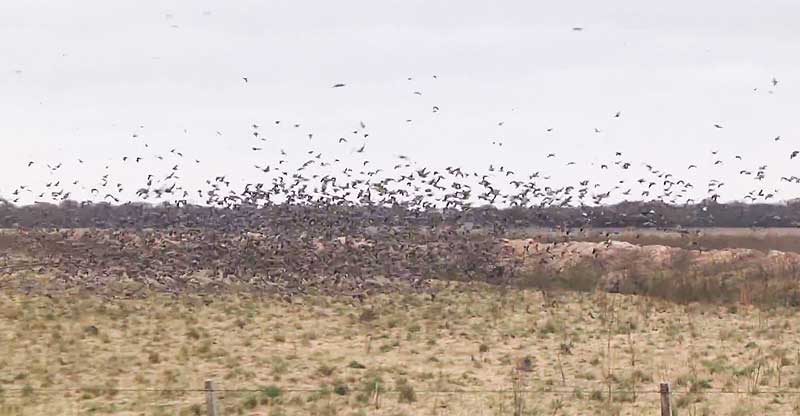Some tips for novice shooters

Although I’ve been writing articles for years on how to improve sove hunting techniques, I’d like to offer you simpler and easier to understand shooting tips with the intention of helping you get better results. I’ll include some technical specifications to take into account, so as to avoid typical mistakes with our shotguns. Some of them are incorrect habits we carry from times when we were fist taught to shoot. These are very easy to avoid and correct and it’s important to know them so we don’t transmit them to our children, our friends, or future dove hunters. I’m going to include simple points that are the first to consider when using a shotgun for the first time and will be a good start to become better shooters.
Shooting practices are divided into two completely different groups, target shooting and wingshooting. Both kinds are very different and it would be a mistake to transfer our knowledge of one kind of shooting into the other one. Normally, when we use a gun for the first time, in general we use a bb gun and we may apply our knowledge of that kind of shooting to our dove hunting, stopping the swing at the moment of shooting, for example, a very common mistake.
In dove hunting, the main aspect for hunters to take into account is precision over decision in the shoot. Shooting a rifle in a hurry without pointing right at the target will not bring about good results, no matter our braveness or determination.


In dove hunting, the main aspect for hunters to take into account is precision over decision in the shoot. Shooting a rifle in a hurry without pointing right at the target will not bring about good results, no matter our braveness or determination.
For wingshooting, it happens all the contrary as for target shooting. For example, it is essential that the shooter has total control of his movements in such a way that he never stops the swing. And contrary to what happens with target shooting, decision has priority over precision. Take into account that a shell shot opens a larger circle of pellets around the target, larger than any bullet shot. The possibility of missing, then, is minimized. But this possibility is increased if we doubt in pulling the trigger, and a tenth of a second delay may suppose a shot several yards away from our target.
As in any sport, the earlier you start practicing, the farther you will get. To avoid the recoiling effect, we use lighter shells (less than 1 oz.), stocks with a good recoiling pad, a shoulder pad, and especially, ear protection. The first time, we should wear both ear plugs and ear muffs. Safety is of prime importance when handling guns. The best safety measure is always check whether the shotgun is loaded or unloaded, having it loaded at the right time and pointing on the right direction.

It’s essential that the stock is adapted to our cheek, in such a way that the shot goes straight to the target the sight points. It’s very common to see how many shooters move their cheeks away from the stock, a habit that was probably adopted when they first started shooting. The piece of advice they were probably given was that instead of resting their face on the stock, they should rest the recoil pad on their shoulders, so as to avoid the recoiling effect. The first teachings are instilled in our brain, so the best recommendation for a novice shooter is that he should firmly rest his cheek on the stock.
The gunsmith will give the necessary length to it, so it also adapts to his shoulder.
Shotguns are especially created and designed to shoot moving objects and this is very important to consider for an inexperienced shooter. It’s a total contradiction to shoot at a fixed target on the ground, especially if we say the typical phrase: “point and shoot”. This will make the future shooter pay more attention to point than to shoot at the right determined time, and he’ll run the risk of stopping the swing before shooting.
Another recommendation we shouldn’t give to novice dove hunters is tell them to close one eye and point, something absolutely unnecessary. In our everyday life when we point to something with our fingers, we do it with both our eyes wide open. We’ll only need to close one eye, when our dominant eye is the opposite to our cheek where we rest the stock.
The best way to start practicing shooting at a target is to go clay shooting, with a disc flying towards us, not at a high speed, 25 yards away, and at a 45º angle. The shooter will be able to break it easily, and this will enhance his confidence, not worrying about the kicking effect and experiencing little by little how fascinating it is to reach flying objects.
These were just some tips to help you improve your hunting technique and I really hope you find them useful.
